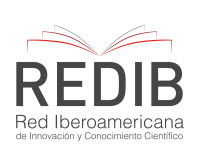Informality in the class structure of argentina: is the informal working class a new social class?
Keywords:
Working Class, Informality, Class Structure, Class Analysis, ArgentinaAbstract
The prevailing class analysis of Latin American societies defines informality as a class cleavage that divides the working class (Portes, 1985; Salvia, 2012). In disagreement with this interpretation, this
research sustains that formal and informal workers share a common class interest, and therefore are two segments of the same social class (Wright, 1983; 1997; 2015). This article is part of a larger
research project that aims to study the structural, organizing and cultural links between these two groups of workers. In particular, this article analyzed biographical and family linkages that connected formal and the informal workers in Argentina (2007). I used survey data from the “Encuesta Nacional de Estratificación y Movilidad Social en la Argentina” (ENES), applied in 2007 to a multistage probability sample of the Argentine population. Data allowed to measure the class schema proposed by Erik Olin Wright (1997), already applied to Argentina data (Jorrat, 2000). The sample used in this analysis consists of individuals between 25 and 65 years old, who were part of the employed labor force at the time of the survey (N=2,035). The paper explores the implications of this evidence for debates around the class position of informal workers.
Downloads
Published
How to Cite
Issue
Section
License
Nota del Copyright
Los trabajos presentados en Revista Pilquen, Sección Ciencias Sociales deben ser originales e inéditos y no estar postulados simultáneamente en otras revistas. El envío de todo tipo de colaboración implica la aceptación de las normas editoriales de la revista y la autorización al Comité Editorial para que difunda los trabajos tanto en la revista como en las bases de datos o sistemas de indización en donde se alojan los contenidos de Pilquen.
Las y los autores que publican en esta revista están de acuerdo con los siguientes términos:
1) Las autoras y los autores conservan los derechos de autor y garantizan a la revista el derecho de ser la primera publicación del trabajo al igual que licenciado bajo una Creative Commons "Atribución -No Comercial CC BY-NC-SA”, mediante la cual ser permite copiar, reproducir, distribuir, comunicar públicamente la obra y generar obras derivadas, siempre y cuando se cite y reconozca al autor original. No se permite, sin embargo, utilizar la obra ni sus posibles obras derivadas con fines comerciales.
2) Las y los autores pueden establecer por separado acuerdos adicionales para la distribución no exclusiva de la versión de la obra publicada en la revista (por ejemplo, situarlo en un repositorio institucional o publicarlo en un libro), con un reconocimiento de su publicación inicial en esta revista.
3) Las y los autores no recibirán compensación monetaria de Pilquen por el uso del material contenido en el artículo; así como tampoco asumirán ningún costo de publicación de los mismos.












